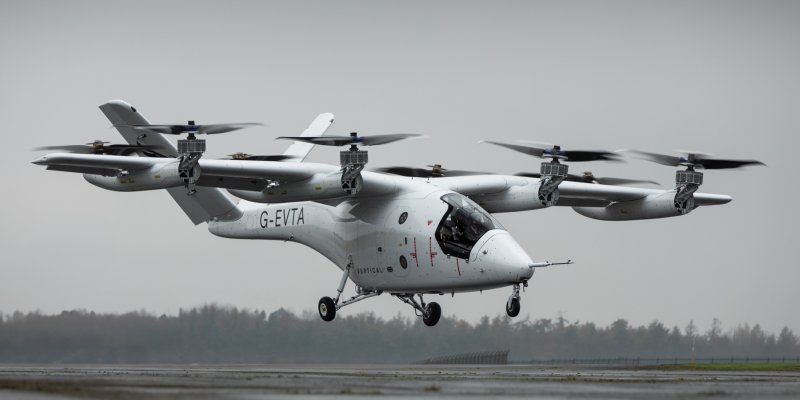Vertical Aerospace has seen its latest full scale VX4 prototype achieve piloted, untethered vertical take-off and landing for the first time as Phase 2 of its flight test programme begins.
The VX4 prototype, powered by industry-leading battery packs delivering up to 1.4 MW of peak power, surpassed expectations in hover performance, control, and stability. Testing will now progress to low-speed manoeuvres using lift generated by the propellers at its Flight Test Centre at Cotswolds Airport, UK.
Thrustborne flights are designed to assess the aircraft’s stability, battery efficiency, control characteristics, aerodynamics, structural and dynamic loads and performance across different speeds, enabling further assessment of how the VX4 behaves under real-world flight conditions.
This marks an expansion of the VX4’s flight envelope beyond the initial tethered hover condition in Phase 1, as the prototype continues to operate under more demanding conditions, ensuring it meets the most stringent safety and regulatory standards.
The second of four testing phases follows the UK Civil Aviation Authority’s (CAA) expansion of Vertical’s Permit to Fly. To secure this expansion, Vertical submitted extensive documentation verifying the VX4 prototype’s safety under Phase 2 conditions. This included systems and structural validations, Phase 1 outcomes, flight test protocols, engineering specifications, and detailed operational procedures.
Vertical will now progress through Phase 2 while working with the CAA to extend it’s Permit to Fly and move onto Phase 3 – wingborne flight tests. This next stage will involve piloted take-off, flight, and landing like a conventional aircraft using wing-generated lift. The primary focus of this phase is expanding the transition envelope as safely as possible – working down in speed from high altitude rather than up in speed from low altitude, which is much safer. Phase 4 will involve transitioning between thrustborne and wingborne flight modes.
Vertical is currently developing an identical full-scale prototype which will accelerate the VX4’s flight test programme and demonstration capability. Once assembled, the company will take flight test learnings from both prototypes into the design and development of the certified VX4 model.
• Phase 1: Tethered: the VX4 will perform stabilised hover while loosely tethered to the ground
• Phase 2: Thrustborne: the VX4 will take-off and land vertically and conduct low speed flight manoeuvres with lift generated by the propellers.
• Phase 3: Wingborne: the VX4 will take-off, fly and land like a conventional aircraft, with lift generated by the wing.
• Phase 4: Transition: The VX4 will transition between thrustborne and wingborne flight, and vice versa.

